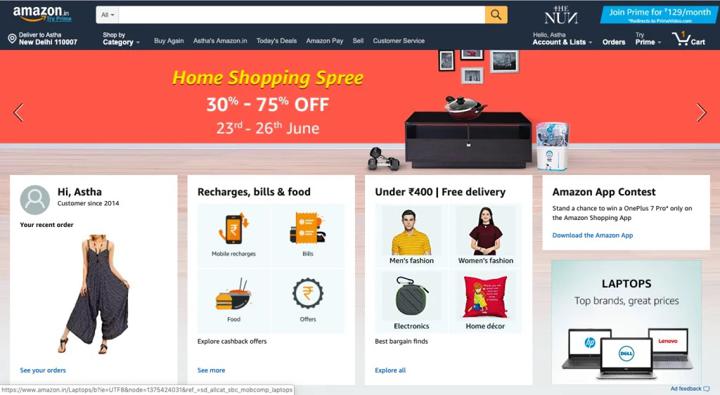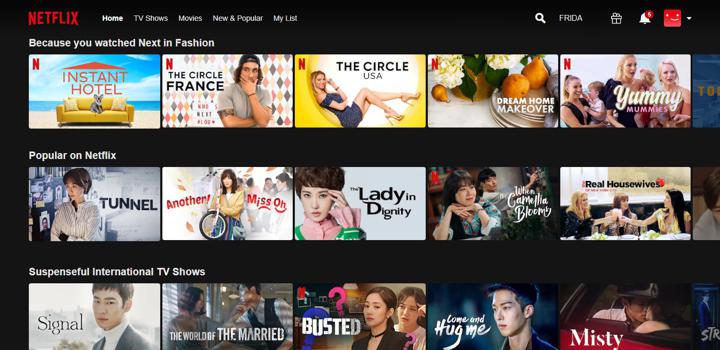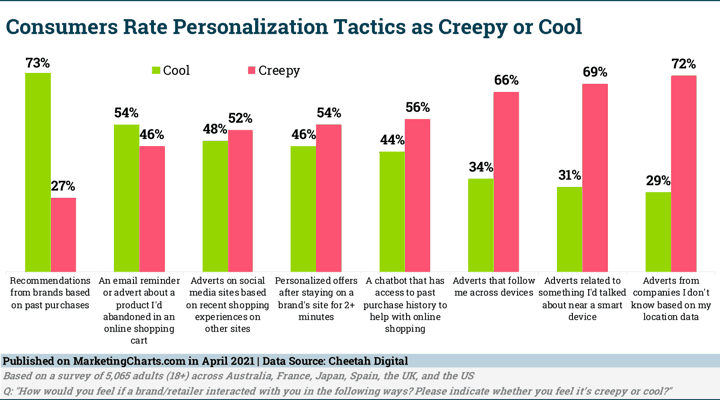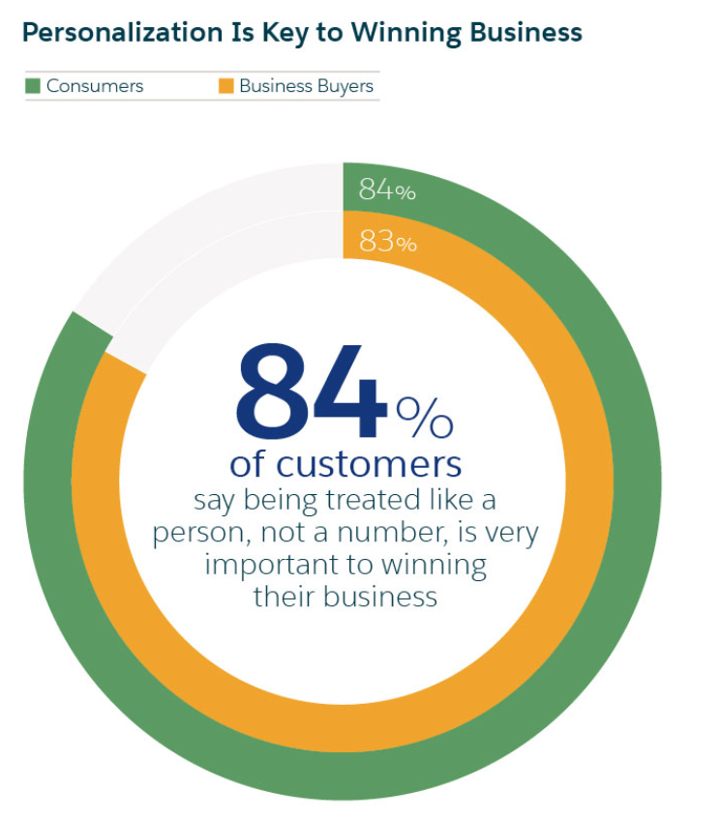In our modern digital age, creepiness is taking over. Feelings of general unease and awkwardness have become commonplace as our technology advances.
Who can forget their first time watching the 2019 movie Cats and witnessing the horror projected upon our cinema screens? The whole audience asked, in unison, “have we gone too far?”
Whilst my Cats anxiety-induced fever dreams were related to CGI (I will never forget what they did to Dame Judi Dench), hyper-personalization isn’t too far behind in terms of creepiness.

We’ve all been a part of the same creepy scenario. Chatting with friends in Central Perk, listening to Rachel complain about another break-up as Chandler makes a sarcastic quip…wait a second…
The scenario I want to mention is the one I found myself in a few weeks ago. I was discussing a new camping trip with friends and then, after a while, I opened my Instagram app. Low and behold, my feed was full of tents and camping stoves.
That’s just downright creepy, Instagram.
Now, I’m aware that ecommerce security has come a long way in recent years. But, when something like that happens, I can feel the gaze of Norman Bates’s mother burning into my soul.
But, it isn’t all bad. Hyper-personalization can be great for your ecommerce business. It can build a valued relationship with customers, which guarantees repeat business. BUT, at times, it can overstep the mark.
This post will tell you how to build trust with your customers via hyper-personalization. We will uncover the perfect balance between customers feeling seen rather than watched.
What is hyper-personalization?
In simple terms, hyper-personalization is the next step in standard personalization marketing. It’s an upgrade that uses AI, machine learning, and behavioral indicators to provide a unique user experience.
Organizations use consumer interactions to deliver a tailor-made online experience. By being aware of consumer habits, they can provide relevant, personalized communication. It also encourages brand loyalty, which is always a good thing.
Features such as geolocation within mobile application software track the user. It generates a real-time analysis of their daily routine and in-moment customer journeys.
Essentially, hyper-personalization leverages big data to create more authentic customer interactions.

Standard personalization will use a customer’s first name in a marketing email. It also creates product recommendations using previous purchase history. This is also used in other forms of marketing such as with SMS marketing.The sender is able to automatically include the recipient's individual name, even if sending bulk texts out to a large number of recipients
Hyper-personalization is a more sophisticated marketing strategy.
Hyper-personalization combines traditional marketing practices with information from social media. It paints a detailed picture of an individual customer. This means that they can target them specifically rather than broadly. Imagine a scaled-back version of spectre testing.
Using accurate data, hyper-personalization reveals an in-depth understanding of their consumers. As its information is relevant and in real-time, organizations have access to unique user habits. This awards them the opportunity to communicate their message effectively.
Examples of effective hyper-personalization
Hyper-personalization is an innovative marketing tool. It is used to stand out in an oversaturated market. As marketing strategies develop, consumers become accustomed to brand–customer communications.
As consumers' expectations become more complex, chief marketing officers are in a predicament. They need to find the perfect balance between effective communication and being downright creepy.
One of the challenges of hyper-personalization is that consumers are becoming accustomed to personalized services. As technology progresses, so must marketing strategies.
75% of consumers agree that they prefer buying from brands that offer personalized digital experiences. The AI-driven strategy makes the process easy and accessible.
Let’s take a look at some effective hyper-personalization examples.
Amazon’s customized homepage
There’s a lot of negative press surrounding Jeff Bezos. Who can forget the time he rudely popped a champagne bottle during William Shatner’s existential crisis.

But all that being said, Amazon’s homepage is a perfect example of hyper-personalization.
Every time a customer lands on the ecommerce site, they are welcomed to a homepage specifically designed for them. It uses previous purchasing behavior, preferences, and wishlists to provide a fully customized experience.
Using predictive analytics, Amazon can anticipate its customers’ needs. The homepage will be full of items they might like or that are similar to what they have bought previously.
They make it simple for the users to discover by placing them directly on their unique homepage; it’s the first thing they see.
By using extensive ecommerce data analysis for its store, Amazon is able to enhance its shopping experience, making it a gold standard for digital shoppers.
Driven by machine learning and AI, Amazon can capture data from many user sources. They can target their user’s location, the gifts they have bought, and demographic information like age and gender.
They are then able to extract patterns through algorithms to offer an individualized experience, making their customers feel engaged through familiarity and simplicity.
Netflix’s blockbuster formula
Like Amazon, Netflix embraces machine learning and hyper-personalization.
The online streaming platform was one of the first to adopt mass-scale personalization. This helped them to become the dominant force that they are today (well…that and The Office).
If you’ve ever browsed someone else’s Netflix account, you will notice that their homepage will be completely different from your own. Their online experience is unique to them and vice versa.
When you first create an account, Netflix will ask you what your movie and television preferences are. This will help their algorithms to create a personalization experience straight away.

Once you start watching, it will then use your consumed content to recommend similar products that you might enjoy. It explores your history to predict when and what you are most likely to consume next.
Knowing how to account for inventory that users will prefer is another of the platform’s strengths. It allows increased customer engagement through perfectly timed notifications.
Whenever a user receives a notification from Netflix, the notification will be personalized. Along with the user’s name, it will inform the receiver of a new product that they might enjoy. Netflix does this through an advanced recommendation system that uses behavioral data.
This type of personalization prolongs a customer’s lifecycle. It does this by providing digital growth and up-to-date product releases that keep them engaged.
These are both great examples of the benefits of hyper-personalization…but, now comes the bad part.
Ok, I’m officially creeped out
Brands have to tread carefully when applying hyper-personalization. Consumers can go from appreciative to utter panic in seconds. They want a personal experience, but once it crosses the line into creepy, that’s when cat Judi Dench appears.
As brands use big data to make customers' lives easier, they need to be careful not to breach their trust. Understanding customer expectations is an essential part of ecommerce marketing.
There is pressure to personalize marketing, but companies still need to remain conscientious. Most consumers value trust, and for years, brands have used trust symbols to boost ecommerce conversion rates.

When brands reveal insights that are a little too personal, consumers feel like their privacy has been invaded. Our digital world has extensive quantities of behavioral data which can be misused at every corner.
Target turns the creepiness scale up to eleven
Target built a home in creepyville when it sent out baby coupons to a pregnant teenage girl. What's worrying is that she hadn’t told her parents yet. They found out through Target’s AI-driven marketing analysis. You know, the way all future grandparents want to be told…
The superstore assigns each shopper a unique Guest ID. Through this, they were able to determine she was pregnant via data mining purchasing habits.
The guest ID allows them to track whenever a customer has bought a product, completed a survey, or visited its website. It then accumulates this data to build a behavioral pattern for all its customer base.
Target deserves a statue for this level of creepiness. So, let’s raise our glass and give the awkward applause digital marketing deserves.
What makes your marketing appear creepy?
Whilst hyper-personalization can give customers a streamlined experience, it risks being too intrusive.

Customers may be delighted that their online experience is shared through omnichannel experiences. But imagine if they walked into an Amazon store and were greeted by name…that's what I thought too.
The following are scenarios that may be construed as creepy:
- Tracking - smartphones know where we are at all times. This includes the duration and frequency of our visits. Brands can use this information to send well-timed ads if we are near their stores.
- Purchase history - As with the Target example, data mining purchases can turn creepy. Even though you may receive relevant recommendations, it’s still unnerving knowing companies are taking note of what we buy.
- Brands share information - like referral program software for small businesses, companies exchange consumers’ personal information, using our data to market to a prospective client… Do you ever get the feeling you’re trapped?
How to avoid being creepy
There are levels of hyper-personalization. Due to the vast customer data that it can accumulate, brands need to consider their priorities before pursuing online sales.
Using sensitive data means they target consumers efficiently, but that in turn could drive their customers away.
Let’s take a look at how to deliver the right level of hyper-personalization.
Transparency
When employing hyper-personalization, the key is transparency. Brands that are open about the kind of data they are collecting provide an amazing customer interaction.
Being proactive rather than reactive deters awkward situations from arising. If a brand is honest, it can limit the disclosure of personal information and put consumers at ease.
It’s about building a long-lasting relationship on trust rather than covert operations.
Consumers are aware that brands collect data and understand the benefits that their data can bring. But when that data is given to third parties without their knowledge, that’s when distrust can appear.

If you want to increase consumer retention, transparency is a conversation that needs to be had.
Personalized product recommendations
Customers presented with a list of personalized recommendations feel the brand is working for them rather than against them.
Hyper-personalization shares the same goal as diversity and inclusion software, and that goal is people. By using historical data, brands can provide a highly relevant product recommendations list.
What’s effective with this strategy is that brands can take their users down a sales funnel. They can present users with products that they have shown an interest in and encourage them to buy.
The idea is to provide a streamlined experience rather than a targeted attack.
If the information is sensitive, don’t use it
Whilst purchase history can be used to form an efficient user experience, brands' use of intimate data can risk losing customers. The key is to not use information that a brand would have no way of knowing.
Technological advances such as VoIP connect users anywhere, but that doesn’t mean users want their data to appear anywhere. The line between user data that is accepted and user data that is questioned is due to explainability.
Netflix’s homepage has a category that shows users what they might enjoy based on what they previously watched. This is data collection that is transparent, which consumers are happy to provide.
But when brands leverage information that has been derived from another source, that is when problems can arise. There is a need to define what information is private within a brand's strategy and adhere to these principles moving forward.
Consumers have no issues with hyper-personalization which is reasonable. What takes away from a brand’s authenticity is when data is traded and used without consent.
Final thoughts
Consumers today have become accustomed to their data being collected. But what they aren’t accustomed to is when their data is used inappropriately. And that’s what hyper-personalization needs to avoid.
In terms of ecommerce sales, hyper-personalization can have a positive impact. When it’s done right, it doesn’t appear as a sales funnel at all, but rather as an effective tool that streamlines user experience.
Used correctly, hyper-personalization can be as cool as Ryan Gosling in Drive, rather than as creepy as Target’s baby reveal parties.
